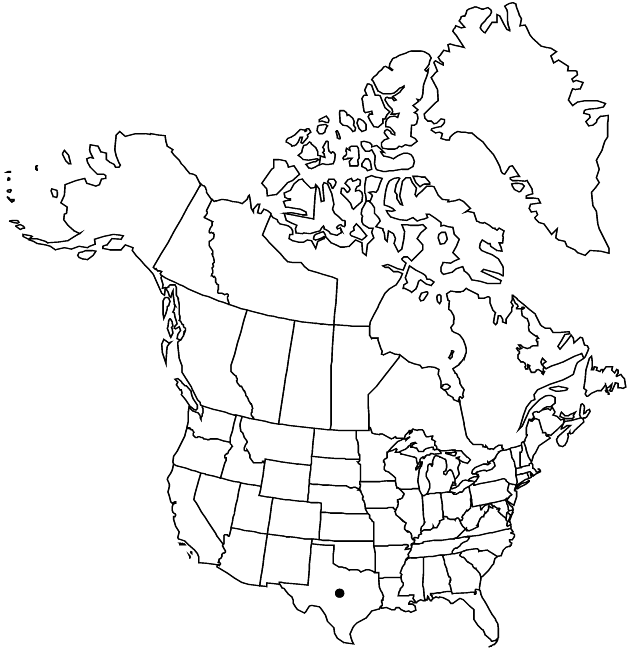Psilostrophe gnaphalodes
in A. P. de Candolle and A. L. P. P. de Candolle, Prodr. 7: 261. 1838.
Biennials or perennials (rarely flowering first-year), (15–) 25–40 (–50+) cm. Stems arachno-villous (gray to gray-green). Heads in ± loose to crowded, corymbiform arrays. Peduncles (5–) 10–25 mm. Involucres 5–6 mm. Rays (2–) 3 (–4); laminae 4–6+ mm, spreading in fruit. Disc-florets 5–9 (–12). Cypselae villous; pappi of 4–5 lance-subulate scales 2–2.5 mm (scales ± villous abaxially and margins ± lacerate). 2n = 32.
Phenology: Flowering Mar–Jun(–Dec).
Habitat: Creosote-bush scrub, desert flats, dry banks, limestone soils
Elevation: 300–1400+ m
Distribution

Tex., Mexico (Coahuila), Mexico (Durango), Mexico (Nuevo León), Mexico (San Luis Potosí), Mexico (Tamaulipas), Mexico (Zacatecas)
Discussion
Selected References
None.
Lower Taxa
None.
... more about "Psilostrophe gnaphalodes"
introrse +
connate +
herbaceous +
scarious +
absent +
hirsute +
papillate +
corymbiform +
continuous +
decurrent +
spatulate;oblanceolate or linear +
winged;ribbed;winged;ribbed +
1;15 +
stigmatic +
35;150 +
absent +
zygomorphic +
monomorphic +
striate-ribbed +
dimorphic +
villous +
staminate +
staminate +
straight +
distinct +
proximal +
1;5 +
bisexual +
dispersed +
corymbiform +
singly +
glomerulate +
cluster +
indeterminate +
surrounding +
cylindric;campanulate or obconic +
spreading +
alternate +
deltate +
2-carpellate +
inferior +
attached +
anatropous +
persistent +
falling +
tough +
thick +
absent +
connate +
persistent +
distinct +
falling +
unequal +
in A. P. de Candolle and A. L. P. P. de Candolle, Prodr. +
1838 +
pistillate +
absent +
fertile +
epaleate +
convex;flat +
fibrous +
entire +
absent +
lance-subulate +
exalbuminous +
modifed +
1;2 +
alternate +
branched +
arachno-villous +
2-branched +
papillate +
Psilostrophe gnaphalodes +
Psilostrophe +
species +
cylindric +
shorter +
dilated +
equaling +